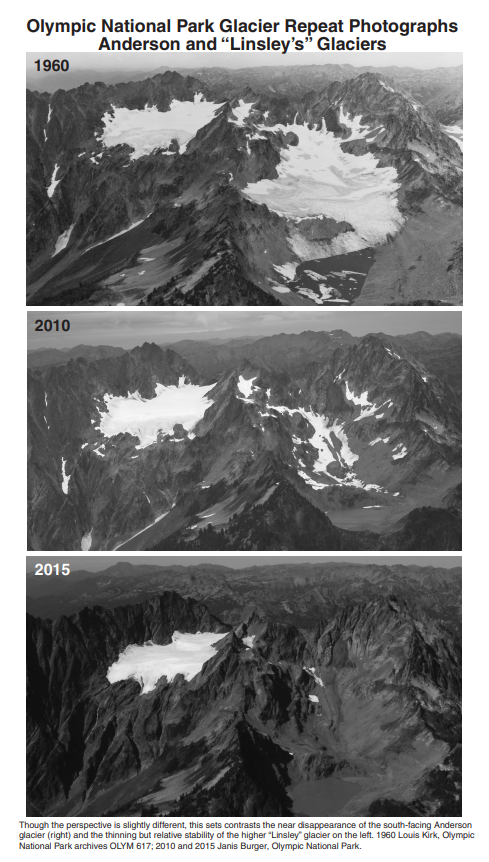






Meet the artist: Kim WeaverKim has worked as an environmental engineer, a Peace Corps volunteer, a high school teacher, and a curriculum developer for STEM subjects (Science, Technology, Engineering, and Math). Her love of poetry was sparked in high school by an outstanding English teacher, leading her to study the time-honored combination of Civil Engineering and Poetry in college. She lives in Poulsbo, WA and is a frequent storyteller and some-time host of Story Night in Bremerton. 
More about Linsley's GlacierLinsley's Glacier is an unofficially named glacier just south of Eel Glacier. Linsley's Glacier is on the opposite side of the ridge from where Anderson Glacier used to be. The officially named Anderson Glacier still appears on maps but, in truth, is lost. The ridge and some other quirks of geography mean that Linsley's Glacier still exists--but for how long? 
Full text with image descriptions:The first poem, "What Remains?" is a concrete poem whose lines form contour lines of a glacier. On the first page the lines fill the page, on the second they fill about half the page, and on the third page there are only a few lines toward the bottom of the page. The text reads: What Remains?
by Kim Weaver No human heart has called you home, but I have loved you, unseen. Feeble warm arms reaching up, up. Icy fingers flowing down, down. When you are gone, what will be etched in to the Earth to mark your passing? Stark white calla lily curves, a memory - now a kingdom of sharp and grey. What can I ask in the face of this? What wish is worth making? Only this - that we pass on the same day, my cooling body curled like a comma around your last icy remnant. My final heat, your last melt. Years flow by, what remains? Bleached white bones, worn by generations of rains and gnawing teeth - the only echoes of your strange geometries. I have loved you, icy fingers flowing down, down. Stark white curves - a memory - my cooling body curled like a comma, your last melt. What remains? Only echoes of your strange geometries. I loved you flowing down a memory - your last. What remains? Only echoes. The second poem, "Honesty in Ice," is also a concrete poem. Lines alternate between the left and right side of the page, as if on two sides of a ridgeline. The text reads: Honesty in Ice
by Kim Weaver There is honesty in ice. The only arguments with two sides
are the freeze
thaw line
and this decisive ridge
that separates my brother's fate
from mine.
High above the loud thousands
denying the testimony of their own baking hides listen for the hard blue truth
in the ice. The empty cirque
where he once flowed beside me amplifies the only voices that matter -
the steady dripping --
my slow, grinding retreat. The third and final poem's final eight lines dwindle in size from large to small font. The text reads: Inherited Fragments
by Kim Weaver This generation will take it worst - only knowing the ice at its most reduced. They will speak in hushed fragments, as their ancestors spoke of inherited heartaches: Passenger pigeons… “…flocks that blotted out the sun…” …the great forests… “…squirrels never touching the ground…” …hand--drawn maps… “…at the edge, thartharbe dragons…” …and dragons… “…their day will never come again.” |
Last updated: April 7, 2023
